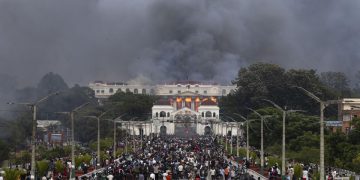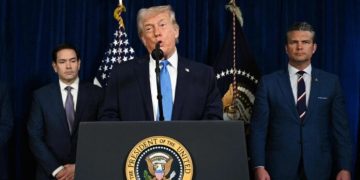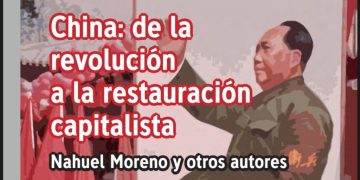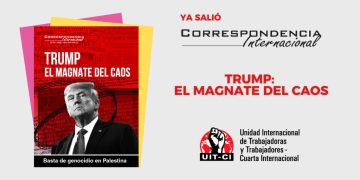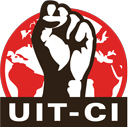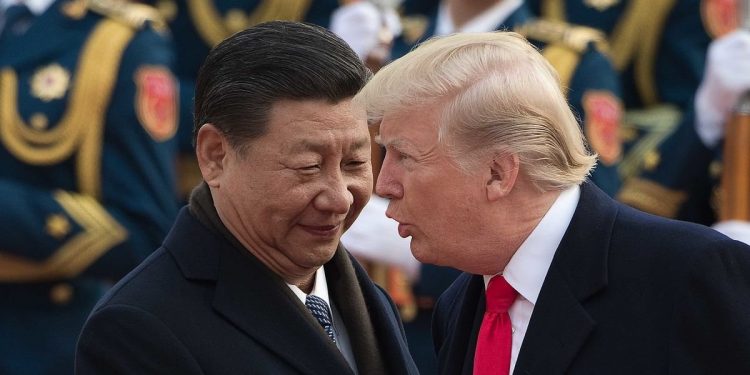The so-called «trade war» unleashed by Trump against China opens a whole series of questions and debates. What is the real magnitude of this conflict? Is it essentially a «war» over technology? Or is it a kind of “cold war” of the United States to prevent China from becoming the dominant capitalist power in the world in a few years? Could China be being «attacked» by imperialism?
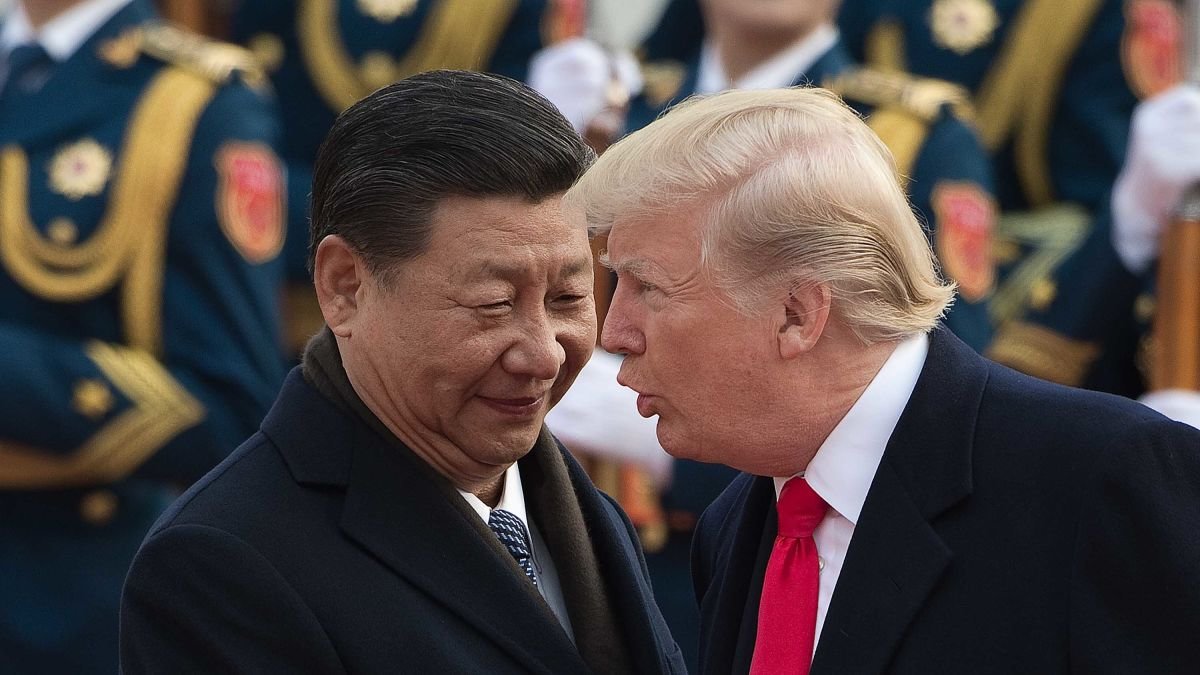 Miguel Sorans
Miguel Sorans
Leader of Izquierda Socialista (Socialist Left) of Argentina and the IWL, International Correspondence 43, August–November 2019
Some leftist authors go so far as to say that Trump and the United States could only impose themselves on China using military force. Also from certain sectors of the reformist left (former Stalinists, Castroism, or Chavismo), they consider there would be something «progressive» in this clash, in favour of China which supposedly would seek «a multipolar world» weakening Yankee imperialism.
From our socialist current we discard any apocalyptic vision as if it could be an irreconcilable clash that could even bring us closer to a third world war. Nor do we consider that there could be something progressive from China. We believe the so-called “trade war” between the United States and China to be a part, logically the most prominent, of all inter-bourgeois friction and clashes that have worsened in the world as a result of the continuation of the capitalist world economic crisis opened in 2007/2008. In this case, it is a strong clash between the economic interests of the dominant imperialist power (United States) and the second and growing capitalist power (China).
Trump and his «trade wars»
The capitalist crisis is global and is the background of these economic or trade shocks. That is why there is not only an «economic war» with China, but Trump has launched several «trade wars.» He began, in 2018, with the European Union (EU) and Canada imposing strong tariffs on the importation of steel and aluminium as well as other industrial products from those countries, to comply with his “America first” electoral slogan. Then he went against Mexico to force it to establish a new free trade agreement. In July, he launched another “war” threatening French President Emmanuel Macron with applying sanctions to French wine, if he did not go back with the so-called “Google tax”, a tax on American multinational companies (Amazon, Google, Apple, and Facebook) that invoice in France above € 750 million per year. Trump takes on the defence of his multinationals’ profits in France and in the world. Additionally, he also endorses the conservative Boris Jonhson, premier of the United Kingdom, who wants to move forward with Brexit, i.e., with the break with the EU, another of the ongoing «trade wars».
Trump is developing a fight for the defence of the interests of Yankee imperialism amid a brutal crisis of the capitalist-imperialist system. He seeks to defend his multinationals and tries to balance their weaknesses in the world market. He threatens with the club to end with the negotiation carrot.
This non-recovery from the crisis is even ratified by the data and preventions of the International Monetary Fund (IMF). In its report World Economic Outlook it says: “Against this backdrop, global growth is forecast at 3.2 percent in 2019, picking up to 3.5 percent in 2020 (…). The projected growth pickup in 2020 is precarious…” (IMF, World Economic Outlook, 23 July 2019). China has ceased to grow in double digits for years: its annual growth is between 6 and 6.2 per cent.
The underlying causes of the non-recovery of the acute crisis of the capitalist economy are because of the failure of imperialism and the multinationals and the IMF to impose the quotas they would need for exploitation and looting on the masses and countries. The other pole of the world situation is the advance of popular rebellions and mass movements against austerity plans, against governments and regimes. This is the main obstacle that Trump, the capitalist dictatorship of the Communist Party in China, and the multinationals across the globe have to overcome the chronic crisis in which they are plunged.
What does Trump get out of his conflict with China?
There are those who say that the background of Trump’s goal in his «economic war» with China would be to prevent it from becoming the dominant capitalist power in a few years, displacing the US. There are many analysts who agree with this vision.
We rule out that this is Trump’s goal. Because, for now, there is no condition in which, in the coming years, China could become a superior power to the United States and, in turn, the dominant power of the world.
The United States, despite its crisis, remains by far the first world power. It is hegemonic and the dominant imperialism. It is real that China has been progressing in recent years and is occupying the second place, behind the United States, in GDP (Gross Domestic Product, the total of what is produced in a country) worldwide. It is also real that China in recent years displaced Japan and Germany from second and third place, respectively. In 2008 we pointed out that China was the seventh world economic power, today it is the second (see article on Correspondencia Internacional No. 25, February 2008, www.uit-ci.org). And it cannot be ruled out that, in the coming decades, China can overcome the US in GDP. But you cannot measure a dominant power in the world just by GDP.
Regarding GDP, we must consider the peculiarity of what China is. It is the country with the largest population on the planet, with 1.4 billion inhabitants. The United States has 327 million. The population of China is 20 per cent of the world total. That gives it exceptional productive potential. But, in the other areas, it is clear the United States is comfortably above China and the rest of the countries of the world. Just compare, for example, per capita income in 2018: while in the United States was US$ 62,850, in China, it was US$ 9,470. It was even lower than that of more backward countries like Argentina, which stood at US$ 12,370. Also if we compare military might, the difference is abysmal. In the ranking of the 100 largest multinational companies in the world, 53 are from the United States and 11 from China. And so we could continue with other numbers.
In fact, reflecting the crisis and decline of US imperialism, Trump is really looking to stifle China to favour his multinationals and his financial capital. Therefore, he also launched an offensive against the large multinationals of European imperialism and Canada, to reach agreements in favour of his companies.
In the peculiar case of China, Trump presses to achieve greater openness for US multinationals and financial capital than what has existed for many years in that country. And to condition China’s renowned technological advances in the field of mobile phones. But this is always based on limiting the competition of Chinese multinationals with Yankee multinationals. Because of the inheritance of the expropriation of the bourgeoisie in the 1949 revolution, state-owned companies and banks still have great weight. The Chinese financial system still has a high state and mixed dominance. Under current regulations, a bank, for example, cannot have a foreign shareholding majority. “Today, foreign firms have less than 2 per cent of the assets of the Chinese banking sector” (La Nación, 11 July 2019). Trump and European imperialism, want to change this. In addition, “China has about 150,000 state-owned companies. It is a very small amount compared to the total number of companies that exist in the country, but their weight is overwhelming” (El País, Business section, 28 May 2019).
And in this, imperialism has made progress. China, on several occasions, has been retreating and agreeing to Yankee pressures. President Xi Jinping, for example, in April 2018, in the middle of the so-called «economic war», made an announcement of a greater opening to foreign investments. Among its most outstanding points, it states that there will be “an immediate majority of foreign capital in Chinese stock companies, and all kinds of restrictions on foreign investment are eliminated in three years” (article by analyst Jorge Castro, Clarín, Argentina, 15 April 2018), which would start in manufacturing. Jinping also announced an opening of regulations in telecommunications and that there would no longer be any restrictions for foreign investment in private health. The same in education, on the grounds that there are already 14 private universities, including a Harvard branch, in China.
These are the things that imperialism seeks. This is the essence of the supposed «economic war» and not a background confrontation or a total break with the Chinese dictatorship.
China: irreconcilable enemy of the United States or strategic capitalist ally?
The facts show that China is not an irreconcilable enemy of the United States but that, first, it has grown as a capitalist power thanks to a large injection of foreign direct investment and especially from the American multinationals.
Second, the dictatorship of the Communist Party of China is essentially an ally of the United States at a key point: the need to continue exploiting the world working class. And in particular the Chinese proletariat and people, to get the highest exploitation quotas that guarantee the super-profits of multinationals and international banks. Therefore, also, in countries where China makes investments in infrastructure or mining works, they move this super-exploitation regime; regime which is endorsed by the capitalist governments of Latin America, Africa, and Asia.
The United States, the EU, China, and Japan are, in fact, part of a counterrevolutionary front against the masses of the world to super exploit them. This is also reflected in the institutional superstructure, in events such as the G7, the G20, in the general assembly of the United Nations, in the IMF, in the World Trade Organization (which China has been part of for decades, confirming they are already a capitalist economy). In these events, the plans for exploitation and looting of the peoples are settled and agreed in an attempt to get out of the crisis the great powers have.
The other major point of agreement between the United States and China, also with the European Union, the Vatican, and Japan is the unrestricted support for the dictatorship of the Chinese Communist Party. For them, it is a guarantee of stability to continue with their super-exploitation plans for their multinationals as well as for any capitalist company installed in China.
All this does not mean that, as a great capitalist country and holder of a Chinese bourgeoisie, it does not have its friction or clashes and economic disputes within the framework of a global crisis of capitalism. Undoubtedly, the regime headed by Xi Jinping defends the interests of a great Chinese bourgeoisie that has been forming in the process of capitalist restoration of recent decades. Among them, private multinational groups such as Alibaba, Lenovo, Huawei or ZTE.
Trump and his contradictions with the «economic war»
Trump’s comings and goings in his «economic wars» show the weakness of imperialism. In the case of China, it led to a division in the great bourgeoisie of the United States itself and the large economic groups linked to foreign trade and its multinationals.
China responded to Trump’s tariffs with heavy import tariffs on US soybeans. Because of them, the claims to Trump by the large soy producers grew. This resulted in the Trump administration having to grant an aid package to the agricultural sector of «US$ 16 billion in order to mitigate the effects of the trade dispute with China» (Clarín, 28 April 2019). Something similar happened with other Yankee multinationals that produce in China and export to the US.
For example, «over 170 companies, including the multinationals Nike and Adidas, asked Trump to remove footwear from the list of Chinese products, whose imports into the country could be affected with 25 per cent tariffs» (Clarín, ibid.).
Huawei conflict
In much of 2019, the centre of the conflict unleashed by Trump was linked to cell phone company Huawei, China’s number one company in cell phones. Huawei is the second-largest mobile phone company in the world, after South Korean Samsung. This conflict also shows the contradictions in which Trump and China itself are immersed.
There are those who say it is a war for «the mastery of technology”. And that China could jeopardise US technological supremacy. We consider that, also in this, there are exaggerations. Even used by Trump himself, who went so far as to accuse Huawei of «endangering national security”, «spying”, and so on.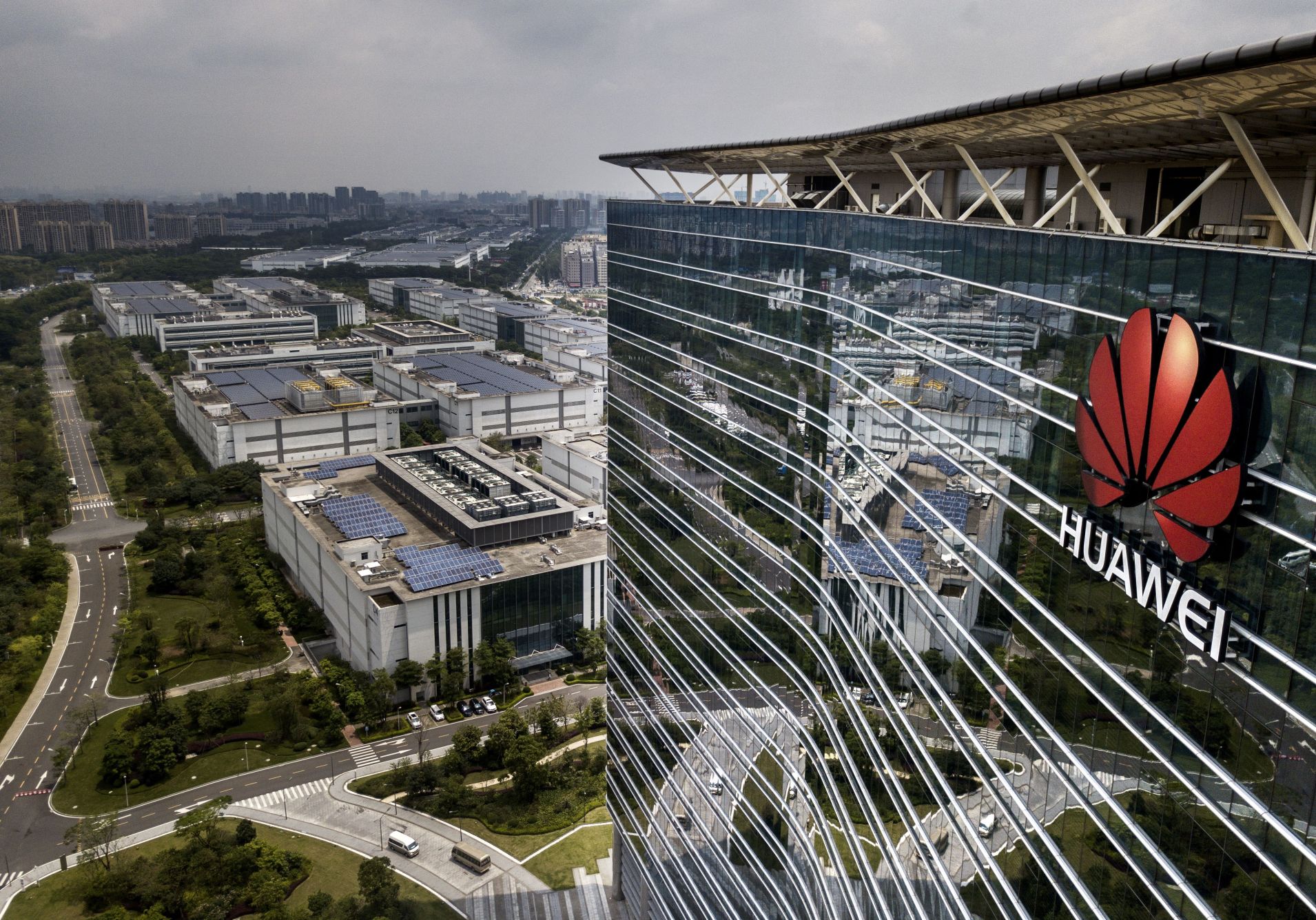
We cannot deny the technological advances of capitalist China. And that in some specific aspects it has approached or surpassed the United States. One of those aspects is the issue of mobile phones and 5G. But it is not real that China is close to surpassing the United States in the global technological issue. Nor is it true that Huawei is the only one that dominates the 5G technology. There are five companies that develop 5G, including the Chinese Huawei and ZTE. But the South Korean Samsung, the Swedish Ericson, and the Finnish Nokia are also advanced.
Therefore, it must be acknowledged that China has progressed in recent years in technological development, but it is an uneven development since it cannot reach the same level as the United States. It has also taken steps in cyberspace or robotics but as a whole it is far behind the United States.
International analyst Jorge Castro, an admirer of Trump and the Chinese regime, recognises the abysmal inequality in technology between the United States and China. Castro points out that «[The United States surpasses China 10 to 1] in basic artificial intelligence research and its pool of talents it reaches 850,000 researchers while there are 50,000 on the People’s Republic» (Clarín, 21 March 2019).
The very example of Huawei, and beyond its worldwide recognised potential, shows that it has no technological independence from the United States. On the contrary, China relies heavily on American components to assemble its cell phones. For example, “American chips and software feed the central Chinese servers. In fact, China has been a huge driver of revenue for Apple, Oracle, Intel, Qualcomm, and other big technology names. And to a large extent, China had no choice since it did not have the capacity to produce these components” (La Nación, Argentina, 21 May 2019).
There is an interrelation, since these American multinationals have Huawei, ZTE, and other Chinese companies as a major buyer for their cell phone components. So, there is a productive integration, a unity between the United States and China, not independence. Huawei depends on the United States and in turn,, American Apple depends on its factory in China. For example, US company Broadcomm, which makes chips, forecasts a fall of US$ 2 billion in its 2019 revenue from Trump’s policy. Hence, in June, over 500 companies in the United States asked through a letter to Trump to stop the so-called «trade war”. Among those companies that signed are Walmart, Levi, GAP, and another 650 American entities (data from Clarín, 15 June 2019). That’s why at the G20 meeting in late June in Japan, Trump had to sit down with Xi Jinping and set a truce for the Huawei conflict, which may be called the «Osaka truce”.
Of course, there will continue to be new clashes and friction between the United States and China and their companies, but the real framework for both Trump and Xi Jinping is the search for agreements between the United States and the Chinese dictatorship, to balance common business.
The future of China as a capitalist power
The outlook and the result of the economic development that China may have in the coming years is closely linked not only to economic issues and pacts with multinationals and the United States, but also to the class struggle in China and the world.
Precisely this factor is denied by most international analysts. The «Chinese miracle» has always been talked about as a demonstration of the progress that capitalism can give. There was a factor that was the unprecedented invasion of foreign investments in the last 20–30 years. But the «Chinese miracle» is based on the over-exploitation of millions of workers with salaries in dollars 30 or 40 times lower than those in the metropolises. This has allowed a capitalist accumulation, enrichment, and a spectacular profit of the multinationals and the new Chinese bourgeoisie itself that was emerging in the heat of openness to capitalism.
The reality of China shows that capitalism as a great «progress» and modernity is limited to a high and middle class, a sector of 300 or 400 million. A strip that includes not only the new oligarchs and Chinese businessmen but the entire bureaucracy of the political and military apparatus of the Chinese CP. But China is a country of 1.4 billion inhabitants, so there is an inequality as is not known in other countries. There are over a billion people who have tremendous salary inequality. In rural areas, half of the population has total poverty wages. There are 82 million who live below the poverty line (World Bank 2018 data), hundreds of millions suffer from the decline in the level of health care and education and, fundamentally, hundreds of millions receive hunger wages.
China is a great capitalist power, a sub-imperialism led by a bourgeois Stalinist dictatorship. It has been built as a great power on those bases of super-exploitation. So, its future is linked to the result of the class struggle. Precisely the slowdown or economic stagnation that China is experiencing has to do not only with the problem of the global crisis, but there has been a wage change in the interior of China because of the development of strikes for years.
In the big industrial centres of the coastal cities, the “offensive” strikes for wage increases have grown since 2010. As the protests grew, wages have increased because the dictatorship and the bourgeoisie had to give concessions to avoid a social destabilization that they fear. The victory of the strike by Honda workers in Guangdong, who achieved a 50 per cent increase, was an example that was repeated in industrial areas. The minimum industrial wage in Guangdong is estimated at US$ 287 (2018 data), still very low compared to the salary of a worker in the big metropolises. But higher than the US$ 60 or US$ 70 they received since the 1980s–1990s. This led to some smaller multinationals moving to other countries where labour costs are lower such as Vietnam, Cambodia or Bangladesh.
So, China’s future is closely linked to the result of this social confrontation. Strikes, that continue to develop each year (in 2018 they increased by 400 protests compared to 2017), combined with the rebellion of hundreds of thousands in Hong Kong for democratic rights, are putting a yellow light of alert. Not only for the Chinese dictatorship but for their own multinationals and imperialism because a social destabilization would cause fundamental changes in the country and in the world situation. The «Chinese miracle» could stumble or cease to be because it is clear that the dictatorial regime is mounted on a pressure cooker, which at some point may end up bursting.
We, as revolutionary socialists, are committed to supporting the struggles of the working class and the youth of China. We rely on this mobilization to end the capitalist dictatorship and achieve a government of the workers and the people. And that the revolutionary traditions of the socialist revolution begun in 1949 with the expropriation of the bourgeoisie can be retaken by the Chinese mass movement in the 21st century, to reverse the capitalist restoration.















